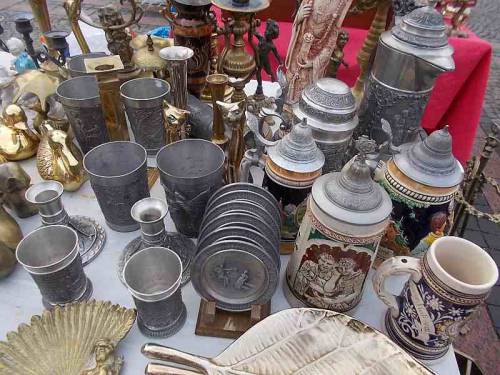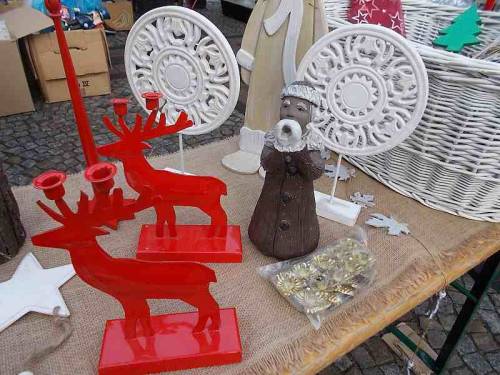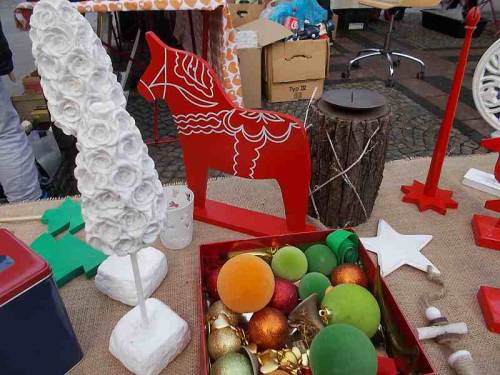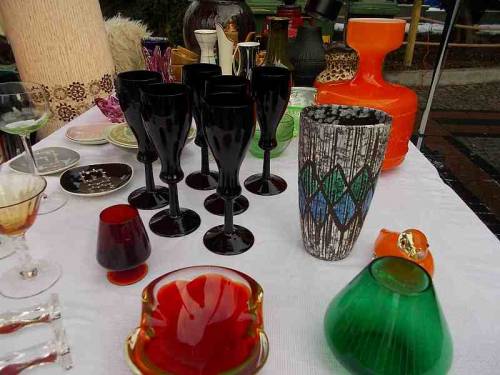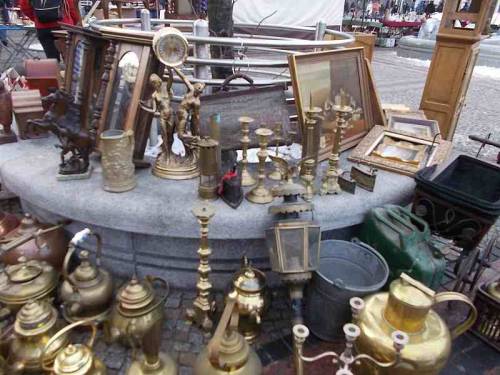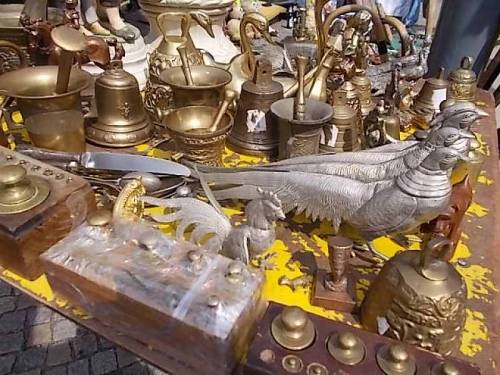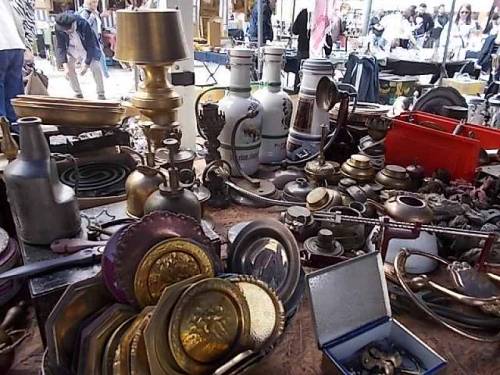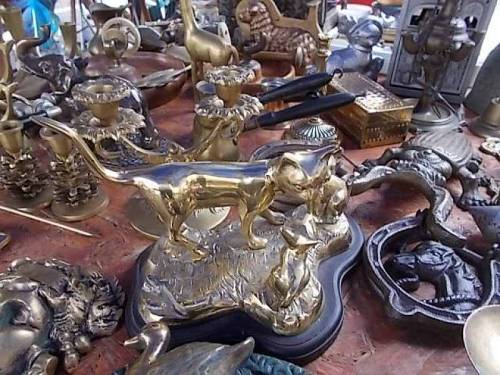#antiquities

Mercury and Maia inside a silver cup dedicated by the freedman P. Aelius Eutychus, from a Gallo-Roman religious site, late 2nd C. CE
“Maia in ancient Greek religion, is one of the Pleiades and the mother of Hermes by Zeus. Maia is the daughter of Atlas and Pleione the Oceanid, and is the oldest of the seven Pleiades. They were born on Mount Cyllene in Arcadia, and are sometimes called mountain nymphs, oreads; Simonides of Ceos sang of "mountain Maia” (Maiados oureias) “of the lovely black eyes.” Because they were daughters of Atlas, they were also called the Atlantides.
The month of May (Latin Maius) was supposedly named for Maia, though ancient etymologists also connected it to the maiores “ancestors”, again from the adjective maius, maior, meaning those who are “greater” in terms of generational precedence. On the first day of May, the Lares Praestites were honored as protectors of the city, and the flamen of Vulcan sacrificed a pregnant sow to Maia, a customary offering to an earth Goddess that reiterates the link between Vulcan and Maia in the archaic prayer formula. In Roman myth, Mercury (Hermes), the son of Maia, was the father of the twin Lares, a genealogy that sheds light on the collocation of ceremonies on the Kalends of May. On May 15, the Ides, Mercury was honored as a patron of merchants and increaser of profit (through an etymological connection with merx, merces, “goods, merchandise”), another possible connection with Maia his mother as a Goddess who promoted growth.“
-taken from wikipedia

Bellerophon riding Pegasus and killing the Chimera, Roman mosaic, the Rolin Museum in Autun, France, 2nd-3rd C. CE.
“He [King Iobates of Lykia (Lycia)] ordered Bellerophon to slay the Khimaira (Chimera), assuming that he would instead be destroyed himself by the beast, since not even a quantity of men could subdue it with ease, let alone one. For it was a single being that had the force of three beasts, the front part of a lion, the tail of a drakon, and the third–middle–head was that of a goat, through which it breathed out fire. It despoiled the countryside and ravaged the herds. It was allegedly reared by Amisodaros (Amisodarus), as Homer also states, and according to Hesiod its parents were Typhon and Ekhidna (Echidna). Bellerophon mounted Pegasos (Pegasus), his winged horse born of Medousa (Medusa) and Poseidon, and flying high into the air brought down the Khimaira with his bow and arrows.”
-Pseudo-Apollodorus, Bibliotheca 2. 31 - 32 (trans. Aldrich) (Greek mythographer 2nd C. CE)
…
“This large medallion is the central part (emblema) of a 110m2 mosaic. This sumptuous floor decoration certainly took place in the reception hall of an aristocratic residence. Discovered in Autun in 1830, it was first presented there, then bought by the State for the Louvre, then the Museums of National Antiquities, before returning to the Rolin Museum in 1985. The medallion treats on a black background the subject of Bellerophon riding Pegasus and slaying the chimera, a monster with the body of a lion, a goat and a serpent. Here the hero is about to ram his spear into the animal’s throat. This theme evokes the victory of intelligence and bravery over evil, and Bellerophon is a model of an ancient hero. The same posture will be taken up in Christian times in the iconography of Saint George.”
-taken from wikipedia






Hermes kills the 100-eyed Argos by The Argos Painter 5th C. BCE.
Side A: Slaying Argos. Bearded Hermes grabs Argos, who has fallen on his left knee and is covered with numerous eyes, by the beard with his left hand and draws his sword against him with his right. Behind the cow mistakenly drawn as a bull. On the right Zeus is seated on a folding chair with animal claw feet, holding a scepter in his left hand.
Side B: Two youths and a man in cloaks, shod. The one on the left is holding a rabbit, the one in the middle a long staff, the bearded man is leaning on a gnarled stick. A diptych above the hare. Attributed to the Argos Painter.
“But now heaven’s master [Zeus] could no more endure Phoronis’ [Io’s] distress, and summoned his son [Hermes], whom the bright shining Pleias [Pleiad Maia] bore, and charged him to accomplish Argus’ death. Promptly he fastened on his ankle-wings, grasped in his fist the wand that charms to sleep, put on his magic cap, and thus arrayed Jove’s [Zeus’] son [Hermes] sprang from his father’s citadel [Mount Olympos] down to earth. There he removed his cap, laid by his wings; only his wand he kept. A herdsman now, he drove a flock of goats through the green byways, gathered as he went, and played his pipes of reed. The strange sweet skill charmed Juno’s [Hera’s] guardian. ‘My friend,’ he called, ‘whoever you are, well might you sit with me here on this rock, and see how cool the shade extends congenial for a shepherd’s seat.’
So Atlantiades [Hermes] joined him, and with many a tale he stayed the passing hours and on his reeds played soft refrains to lull the watching eyes. But Argus fought to keep at bay the charms of slumber and, though many of his eyes were closed in sleep, still many kept their guard. He asked too by what means this new design (for new it was), the pipe of reeds, was found. Then the God told this story [of Pan and his pursuit of the Nymphe Syrinx] …
The tale remained untold; for Cyllenius [Hermes] saw all Argus’ eyelids closed and every eye vanquished in sleep. He stopped and with his wand, his magic wand, soothed the tired resting eyes and sealed their slumber; quick then with his sword he struck off the nodding head and from the rock threw it all bloody, spattering the cliff with gore. Argus lay dead; so many eyes, so bright quenched, and all hundred shrouded in one night. Saturnia [Hera] retrieved those eyes to set in place among the feathers of her bird [the peacock] and filled his tail with starry jewels.”
-Ovid, Metamorphoses

Oedipus and the Sphinx, interior of an Attic red-figured kylix (cup or drinking vessel), c. 470 BCE. The Gregorian Etruscan Museum, the Vatican Museums, Rome.
“For whom have the Gods and divinities that share their altar and the thronging assembly of men ever admired so much as they honored Oidipous (Oedipus) then, when he removed that deadly, man-seizing plague (kêr) [i.e. the Sphinx] from our land.”
-Aeschylus, Seven Against Thebes 773 ff
Goddesses figurines,Yarmukian culture, Sha‘ar Hagolan (contemporary Israel), 8,000 years ago (Pottery Neolithic period).
Clay and pigments, H:15.8; W:6.8 cm (1), H:15.1 ; W: 6.9 cm(2), The Israel Antiquities Authority, The Israel Museum, Jerusalem.
.
Post link
Rare 1,800-Year-Old Marble Bathtub from Aphrodisias Rescued from Thieves
A spectacular marble bathtub has been recovered from antiquities thieves in Turkey. The bathtub is the only example known to have come from the wealthy city of Aphrodisias, a major center of art in the late Hellenistic and Roman worlds.










Proof positive



